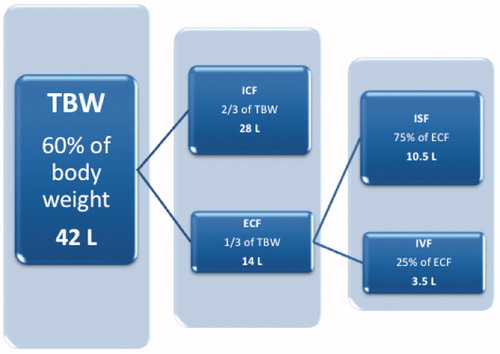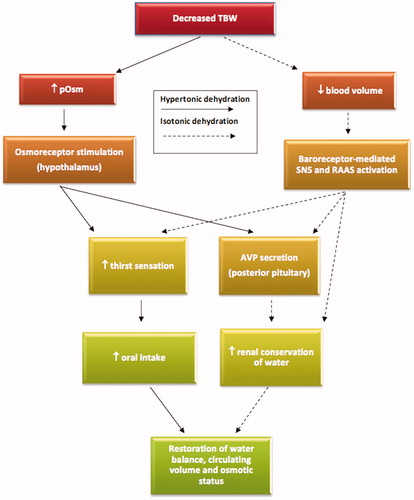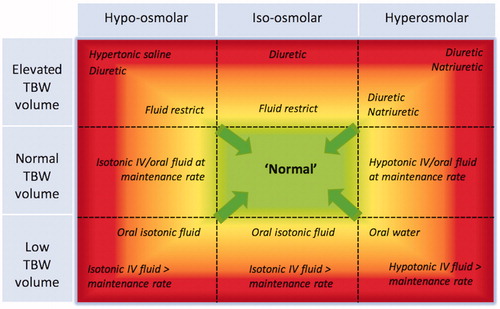Figures & data
Figure 1. Schematic representation of the body fluid compartments in humans and their relative sizes. The approximate absolute volumes of the compartments (in litres) are based on a 70 kg adult. TBW: total body water; ICF: intracellular fluid; ECF: extracellular fluid; ISF: interstitial fluid; IVF: intravascular fluid.

Table 1. Distribution of the fifteen consensus statements across the three subject areas.
Table 2. Dehydration research recommendations generated from all the working groups.
Figure 2. The homeostatic responses of the two major forms of dehydration: hypertonic (primarily osmotic-dependent response) and isotonic (primarily volume-dependent response). The osmotic response is more sensitive and acts as the principal determinant of water balance. Note that both responses can co-exist. TBW: total body water; pOsm: plasma osmolality; SNS: sympathetic nervous system; RAAS: renin–angiotensin–aldosterone system; AVP: arginine vasopressin.

Figure 3. The relationship between osmotic state and total body water (TBW). It is possible for patients to exist in any one of the nine panels. The graded colouration reflects severity of condition. Possible treatment options for different parts of each panel are written in italics, with the arrows representing intended effects of intervention to normalize physiology. IV: intravenous (Image reproduced with permission from the Perioperative Quality Initiative, POQI).

